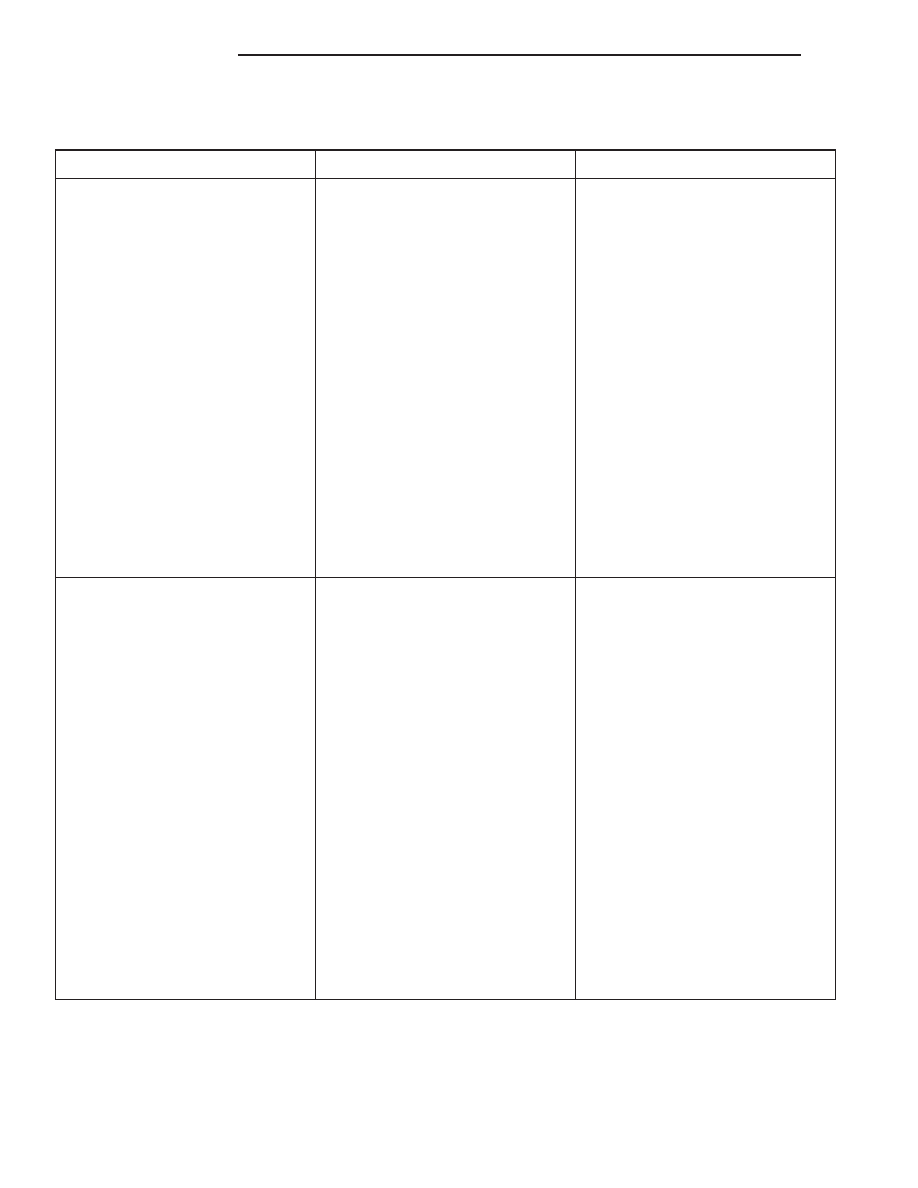Dodge Dakota (R1). Manual - part 485

DIAGNOSIS AND TESTING - ENGINE DIAGNOSIS - LUBRICATION
CONDITION
POSSIBLE CAUSES
CORRECTION
OIL LEAKS
1. Gaskets and O-Rings.
1.
(a) Misaligned or damaged.
(a) Replace as necessary.
(b) Loose fasteners, broken or
porous metal parts.
(b) Tighten fasteners, Repair or
replace metal parts.
2. Crankshaft rear seal
2. Replace as necessary (Refer to 9
- ENGINE/ENGINE BLOCK/
CRANKSHAFT OIL SEAL - REAR -
REMOVAL).
3. Crankshaft seal flange.
Scratched, nicked or grooved.
3. Polish or replace crankshaft.
4. Oil pan flange cracked.
4. Replace oil pan (Refer to 9 -
ENGINE/LUBRICATION/OIL PAN -
REMOVAL).
5. Timing chain cover seal,
damaged or misaligned.
5. Replace seal (Refer to 9 -
ENGINE/ENGINE BLOCK/
CRANKSHAFT OIL SEAL - FRONT
- REMOVAL).
6. Scratched or damaged vibration
damper hub.
6. Polish or replace damper.
OIL PRESSURE DROP
1. Low oil level.
1. Check and correct oil level.
2. Faulty oil pressure sending unit.
2. Replace sending unit (Refer to 9
- ENGINE/LUBRICATION/OIL
PRESSURE SENSOR/SWITCH -
REMOVAL).
3. Low oil pressure.
3. Check oil pump and bearing
clearance.
4. Clogged oil filter.
4. Replace oil filter (Refer to 9 -
ENGINE/LUBRICATION/OIL FILTER
- REMOVAL).
5. Worn oil pump.
5. Replace oil pump (Refer to 9 -
ENGINE/LUBRICATION/OIL PUMP
- REMOVAL).
6. Thin or diluted oil.
6. Change oil and filter.
7. Excessive bearing clearance.
7. Replace as necessary.
8. Oil pump relief valve stuck.
8. Replace oil pump (Refer to 9 -
ENGINE/LUBRICATION/OIL PUMP
- REMOVAL).
9. Oil pump suction tube loose,
damaged or clogged.
9. Replace as necessary.
9 - 128
ENGINE 4.7L
AN
ENGINE 4.7L (Continued)